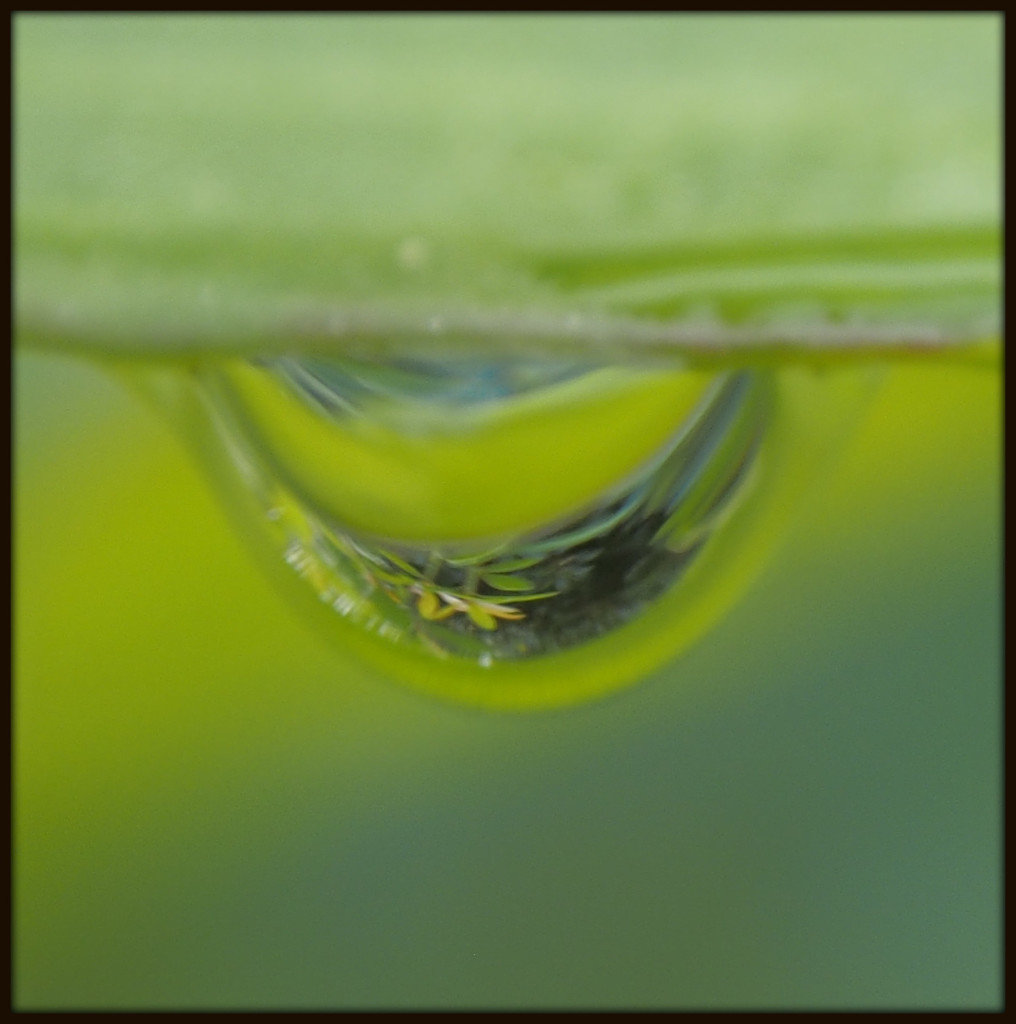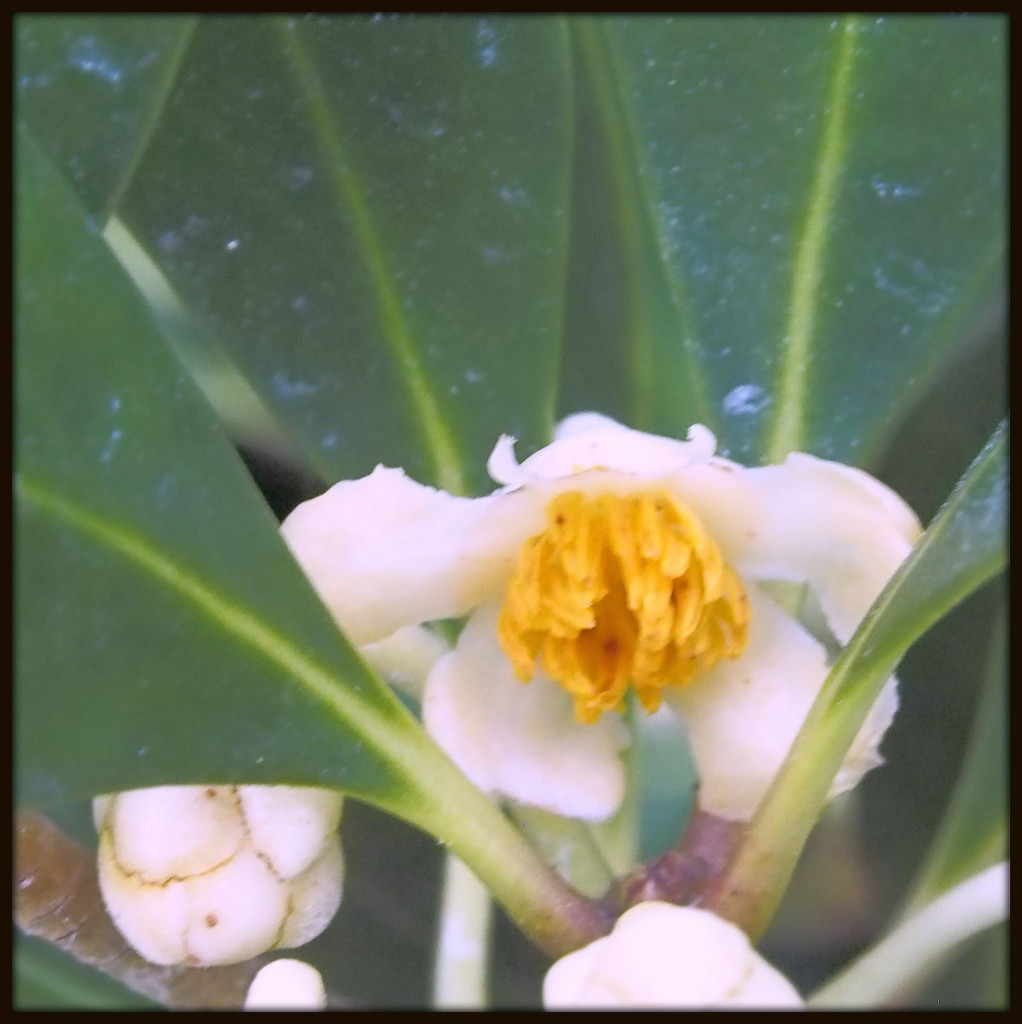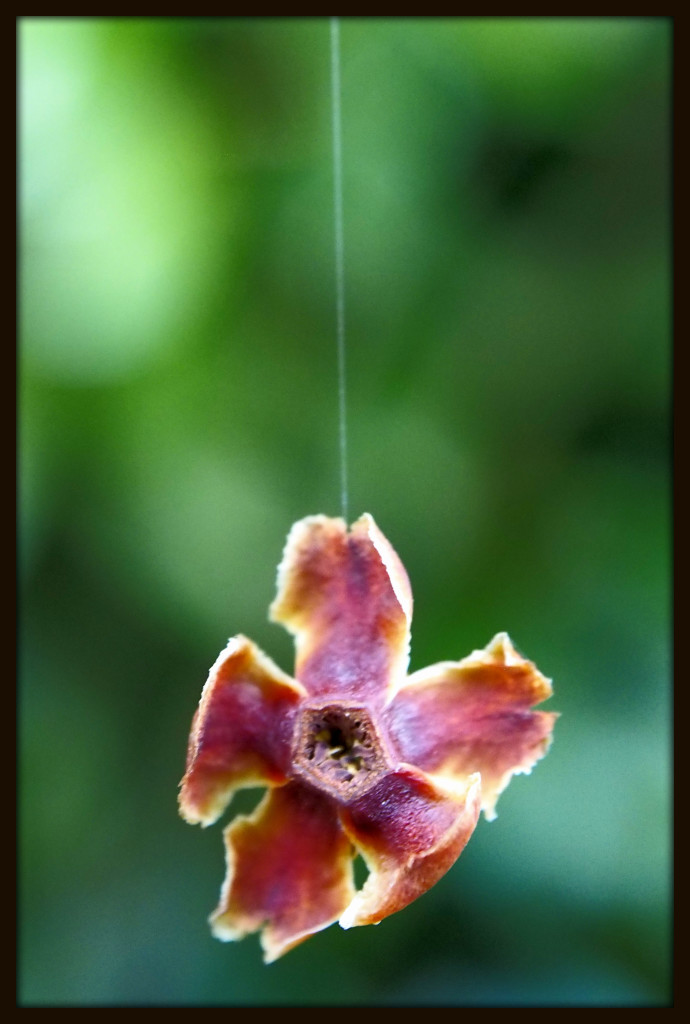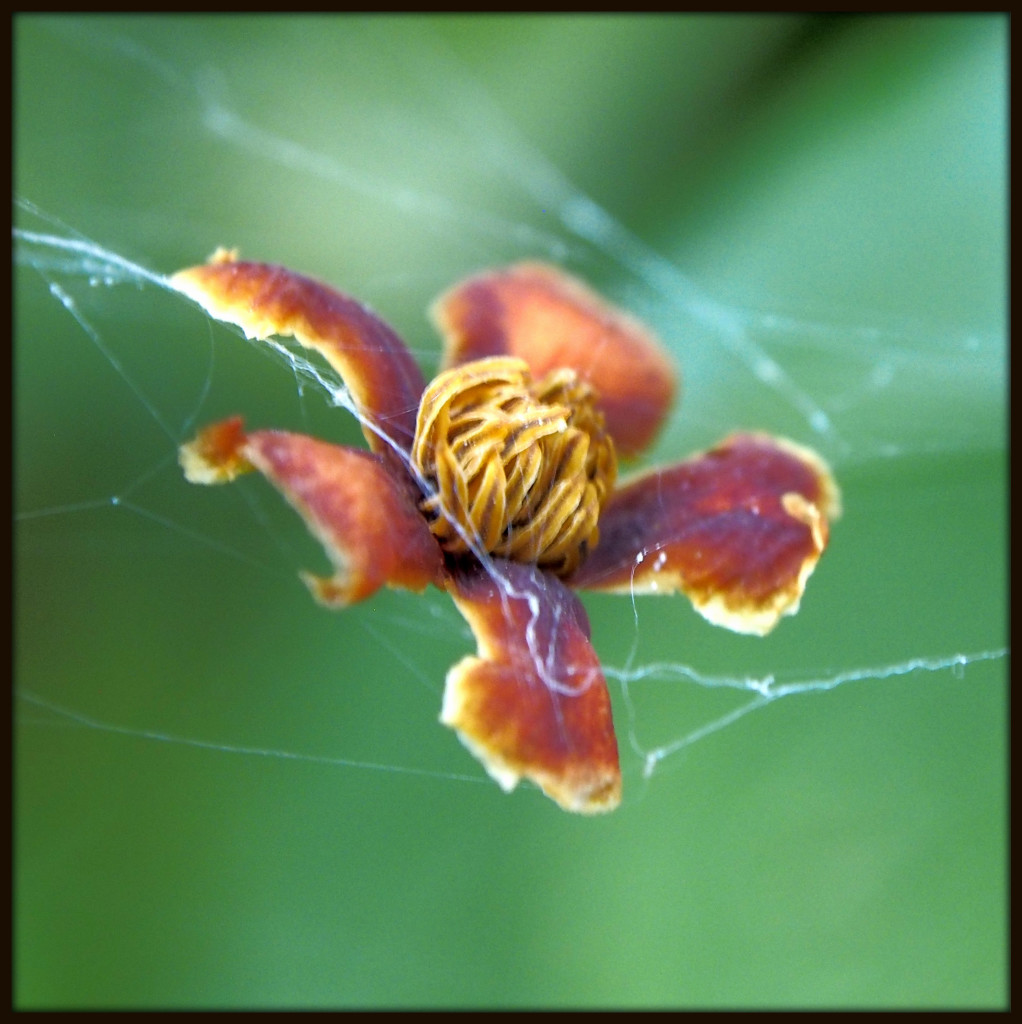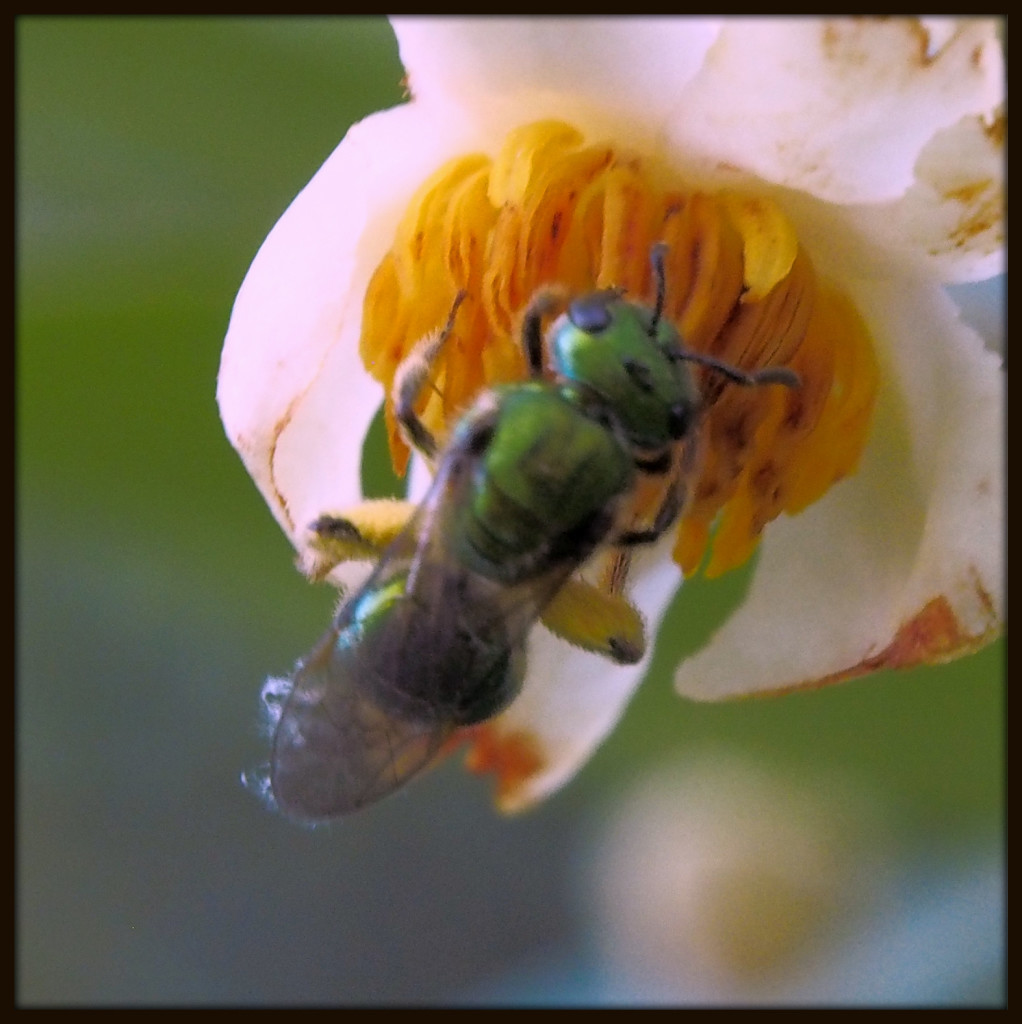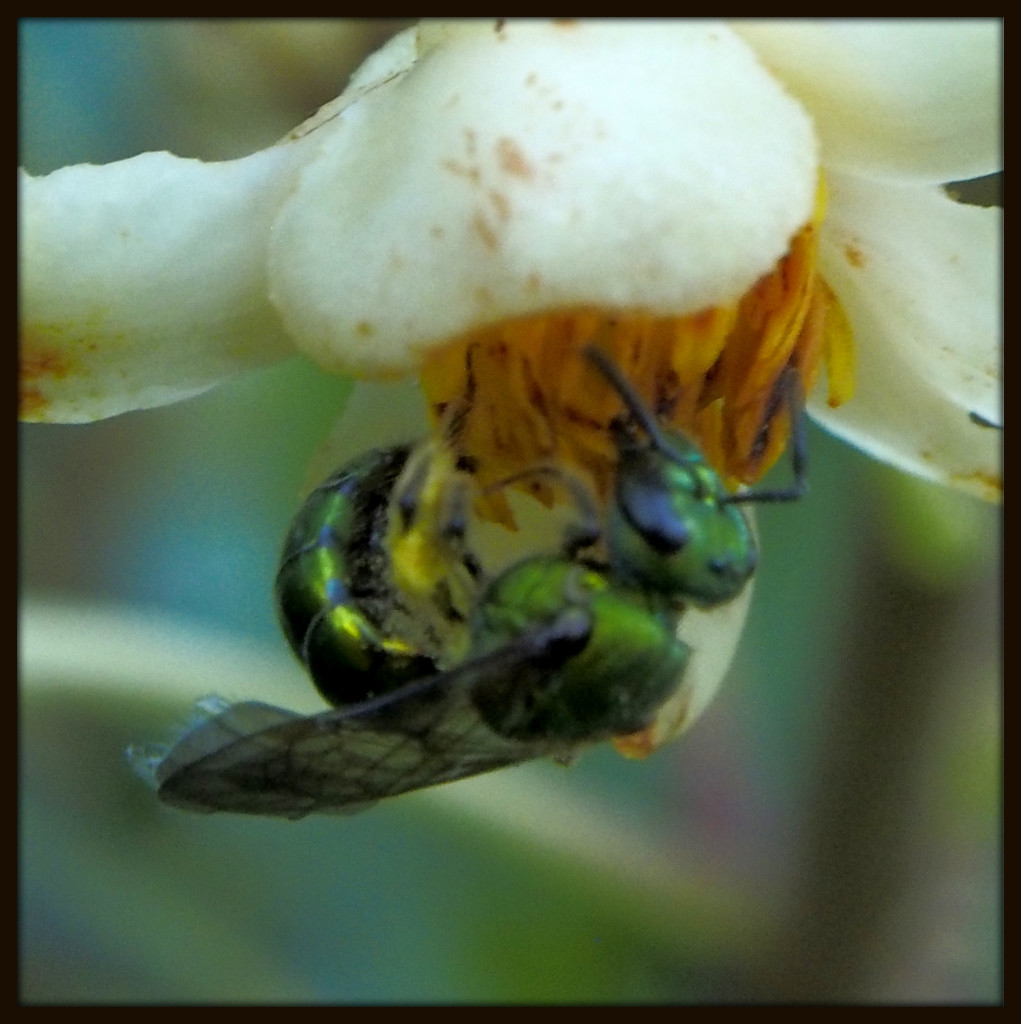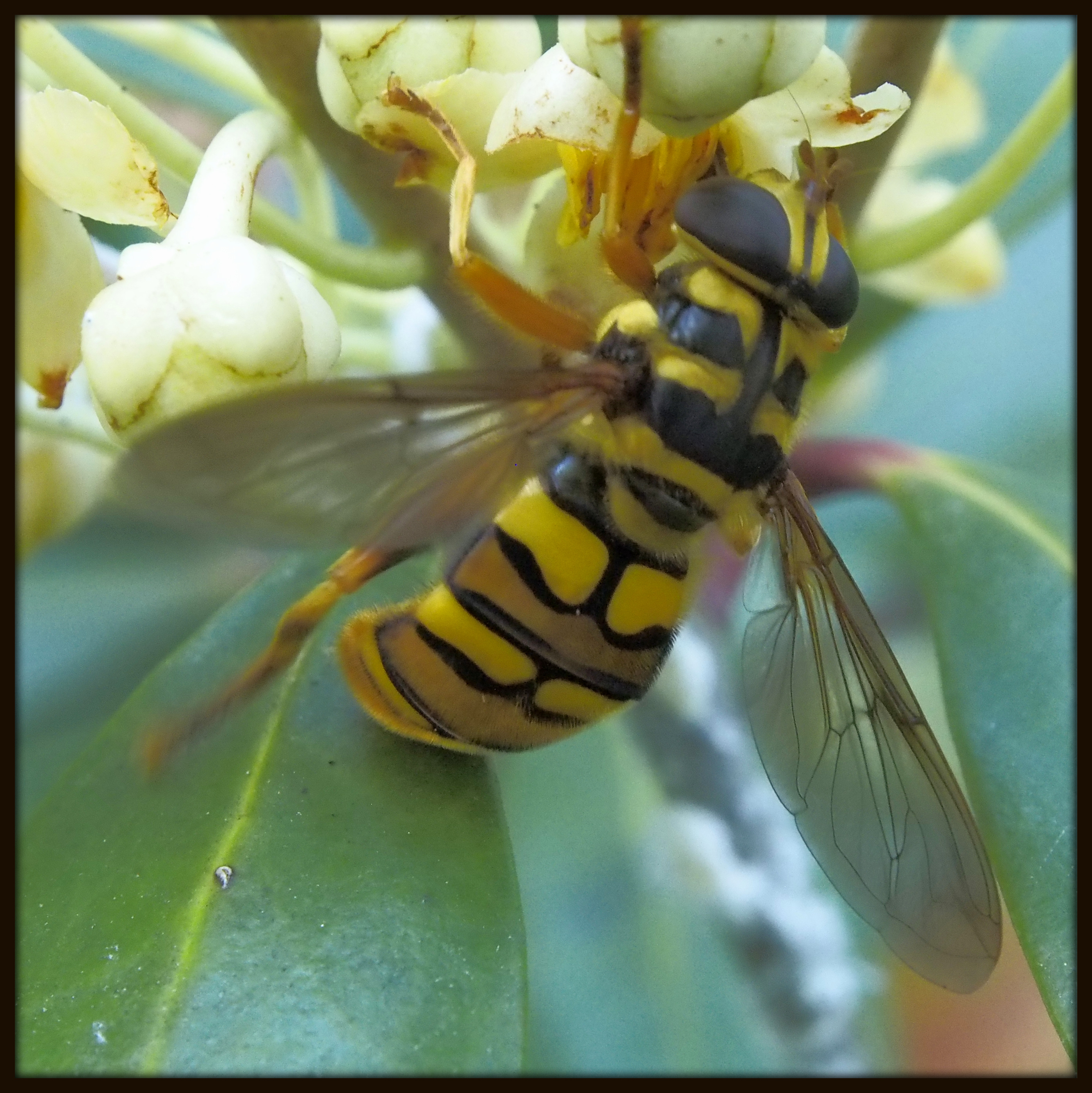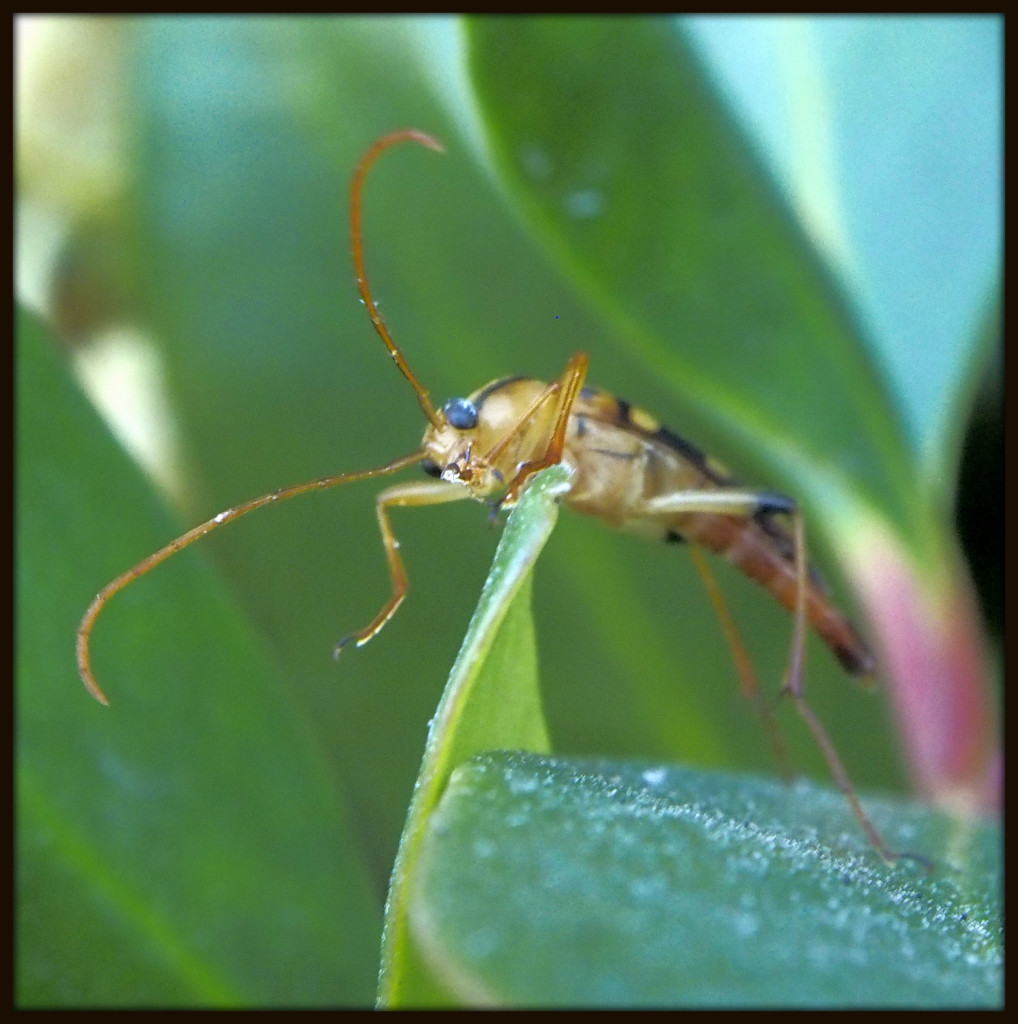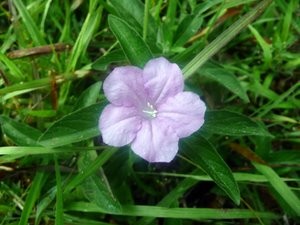 Purple is a color that usually evokes late summer: the deep, dark purple of pokeweed berries (just now coming into bloom here in Georgia) and the succulent reddish-purple of the muscadines. But even now, on the cusp of the summer solstice, the observant naturalist can discover abundant shades of purple, from pinkish tones to violet ones, on a roadside walk. A brief stroll along the road edges here in Chattahoochee Hills, Georgia, revealed enough purple tones to write about: three flowers and two early fruits. The first flash of purple was toward the pinkish-blue shade, catching the eye amongst the various greens of roadside grasses and weeds. This five-petaled beauty (shown on the left) is a hairy ruellia (Ruellia caroliniensis), also known as Carolina wild petunia. A trumpet-shaped flower about one inch across, it looks like the kind of flower that would be found on a Hawaiian lei. Indeed, the genus Ruellia is largely a tropical one. Common throughout the eastern and central U.S., this perennial wildflower bears blooms that last for only one day.
Purple is a color that usually evokes late summer: the deep, dark purple of pokeweed berries (just now coming into bloom here in Georgia) and the succulent reddish-purple of the muscadines. But even now, on the cusp of the summer solstice, the observant naturalist can discover abundant shades of purple, from pinkish tones to violet ones, on a roadside walk. A brief stroll along the road edges here in Chattahoochee Hills, Georgia, revealed enough purple tones to write about: three flowers and two early fruits. The first flash of purple was toward the pinkish-blue shade, catching the eye amongst the various greens of roadside grasses and weeds. This five-petaled beauty (shown on the left) is a hairy ruellia (Ruellia caroliniensis), also known as Carolina wild petunia. A trumpet-shaped flower about one inch across, it looks like the kind of flower that would be found on a Hawaiian lei. Indeed, the genus Ruellia is largely a tropical one. Common throughout the eastern and central U.S., this perennial wildflower bears blooms that last for only one day.
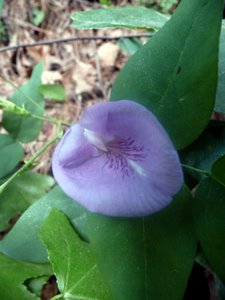 The gravel road passes through a wooded area with a canopy of loblolly pine and sweetgum, and an understory of oaks, black cherries, and persimmons. On a steep bank beside the road, in the shade, a stunning pinkish lavender flower is in bloom. Its irregular shape indicates that it is a member of the pea family (Fabaceae). Called butterfly pea (Clitoria mariana), it is a native perennial common to open areas throughout the eastern U.S. Another primarily tropical genus, Clitoria is abundant in Southeast Asia, where flowers are used for dyes and are also batter-dipped and deep-fried. Only two members of Clitoria are found in the U.S.; the second one (Clitoria fragrans) is restricted to sandlands in Florida. For those wondering, the rather racy genus name comes from the shape of the flower.
The gravel road passes through a wooded area with a canopy of loblolly pine and sweetgum, and an understory of oaks, black cherries, and persimmons. On a steep bank beside the road, in the shade, a stunning pinkish lavender flower is in bloom. Its irregular shape indicates that it is a member of the pea family (Fabaceae). Called butterfly pea (Clitoria mariana), it is a native perennial common to open areas throughout the eastern U.S. Another primarily tropical genus, Clitoria is abundant in Southeast Asia, where flowers are used for dyes and are also batter-dipped and deep-fried. Only two members of Clitoria are found in the U.S.; the second one (Clitoria fragrans) is restricted to sandlands in Florida. For those wondering, the rather racy genus name comes from the shape of the flower.
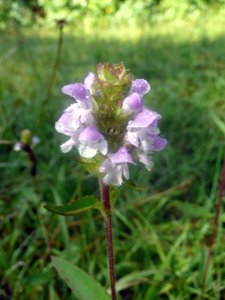 Back out into the sunlight of a steamy late June morning, and along a grassy verge, a number of tiny violet and white flowers are in bloom in a short, cylindrical spike atop a stalk about one and a half feet tall. A Eurasian roadside wildflower, heal-all (Prunella vulgaris) is a member of the mint family (Lamiaceae). As its name suggests, heal-all has been used as a traditional folk remedy for many complains. The leaf tea, for instance, was used to treat mouth sores, sore throats, fevers, and diarrhea, while a poultice from this plant has been used for treating wounds, Chemcial analysis of this plant has revealed that it contains compounds with antibiotic, anti-tumor, and hypertensive properties. It contains large quantities of a powerful antioxidant called rosmarinic acid (named for rosemary, which also contains the compound).
Back out into the sunlight of a steamy late June morning, and along a grassy verge, a number of tiny violet and white flowers are in bloom in a short, cylindrical spike atop a stalk about one and a half feet tall. A Eurasian roadside wildflower, heal-all (Prunella vulgaris) is a member of the mint family (Lamiaceae). As its name suggests, heal-all has been used as a traditional folk remedy for many complains. The leaf tea, for instance, was used to treat mouth sores, sore throats, fevers, and diarrhea, while a poultice from this plant has been used for treating wounds, Chemcial analysis of this plant has revealed that it contains compounds with antibiotic, anti-tumor, and hypertensive properties. It contains large quantities of a powerful antioxidant called rosmarinic acid (named for rosemary, which also contains the compound).
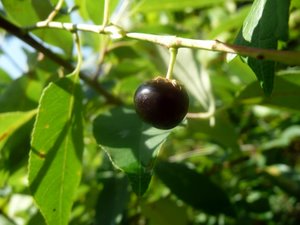 On the way home along the edge of a loblolly pine woods, a small dark purple fruit less than half an inch in diameter can be seen among the eliptical leaves of an understory tree. The fruit belongs to the black cherry (Prunus serotina), a much-prized deciduous tree common to the eastern and central U.S. Although the fruit is somewhat bitter, it is edible, and is often used for making wine and preserves. Birds feast on the fruits, while deer and other animals eat the leaves. Extracts of the inner bark are also used to make cough syrup. The wood of mature trees has a fine grain and rich orange-rose color, and is much valued by furniture-makers.
On the way home along the edge of a loblolly pine woods, a small dark purple fruit less than half an inch in diameter can be seen among the eliptical leaves of an understory tree. The fruit belongs to the black cherry (Prunus serotina), a much-prized deciduous tree common to the eastern and central U.S. Although the fruit is somewhat bitter, it is edible, and is often used for making wine and preserves. Birds feast on the fruits, while deer and other animals eat the leaves. Extracts of the inner bark are also used to make cough syrup. The wood of mature trees has a fine grain and rich orange-rose color, and is much valued by furniture-makers.
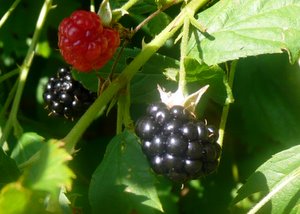 Not far from the black cherry tree is a dense thicket of shrubs and vines edging a roadside stream. Amongst the tangle of grape vines and elderberry bushes grow a number of black raspberries (Rubus occidentalis) just coming into fruit. The deep purple to black orbs look inviting, but first must be inspected carefully for ants that are also dining on them. This thorny cane, common in disturbed areas in the Eastern U.S., appears quite similar to the southern blackberry (Rubus argutus). However, while the black raspberry fruits separate easily from their receptacles (as evident in the photograph above), blackberry fruits do not. After several minutes of carefully investigating this year’s black raspberry harvest, this author returned home, purple-fingered and purple-tongued.
Not far from the black cherry tree is a dense thicket of shrubs and vines edging a roadside stream. Amongst the tangle of grape vines and elderberry bushes grow a number of black raspberries (Rubus occidentalis) just coming into fruit. The deep purple to black orbs look inviting, but first must be inspected carefully for ants that are also dining on them. This thorny cane, common in disturbed areas in the Eastern U.S., appears quite similar to the southern blackberry (Rubus argutus). However, while the black raspberry fruits separate easily from their receptacles (as evident in the photograph above), blackberry fruits do not. After several minutes of carefully investigating this year’s black raspberry harvest, this author returned home, purple-fingered and purple-tongued.
This article was originally published on June 18, 2010.

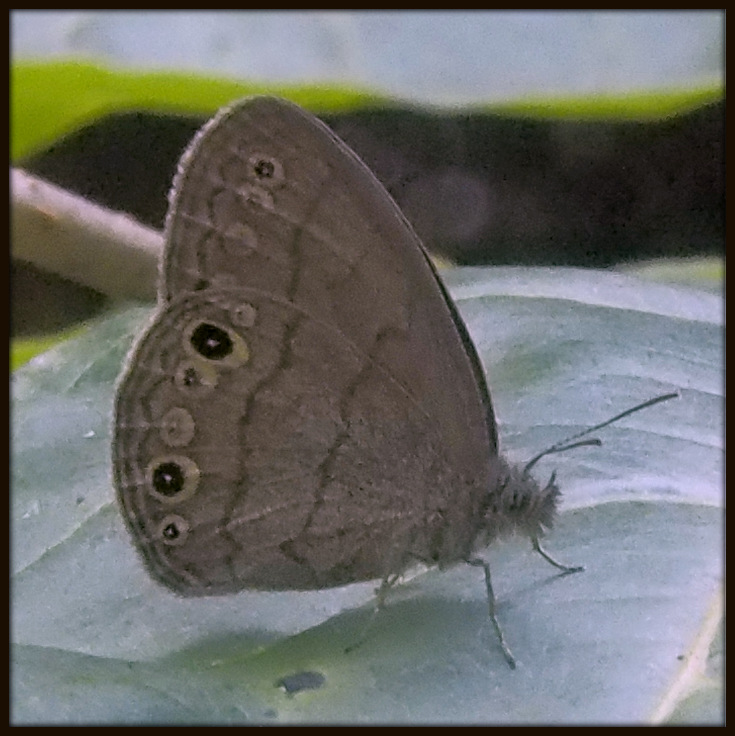
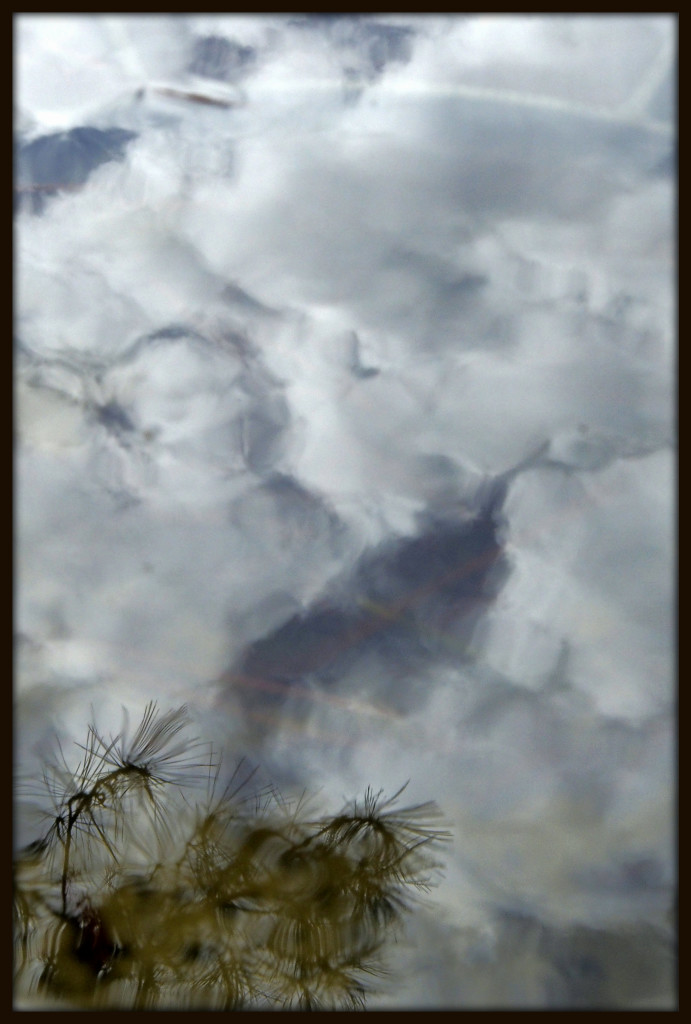
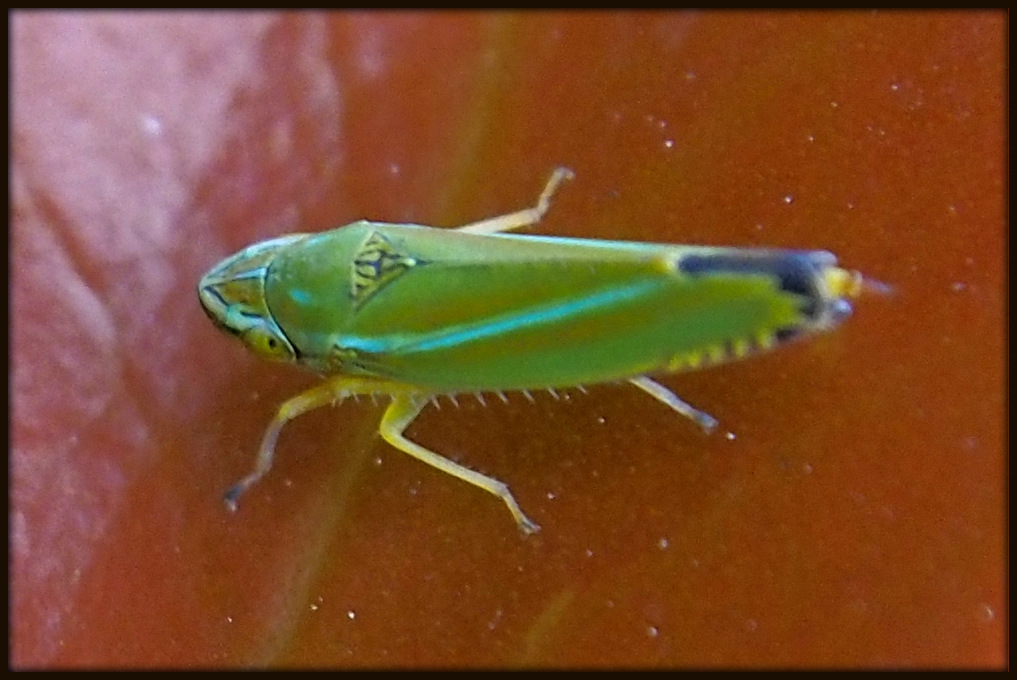
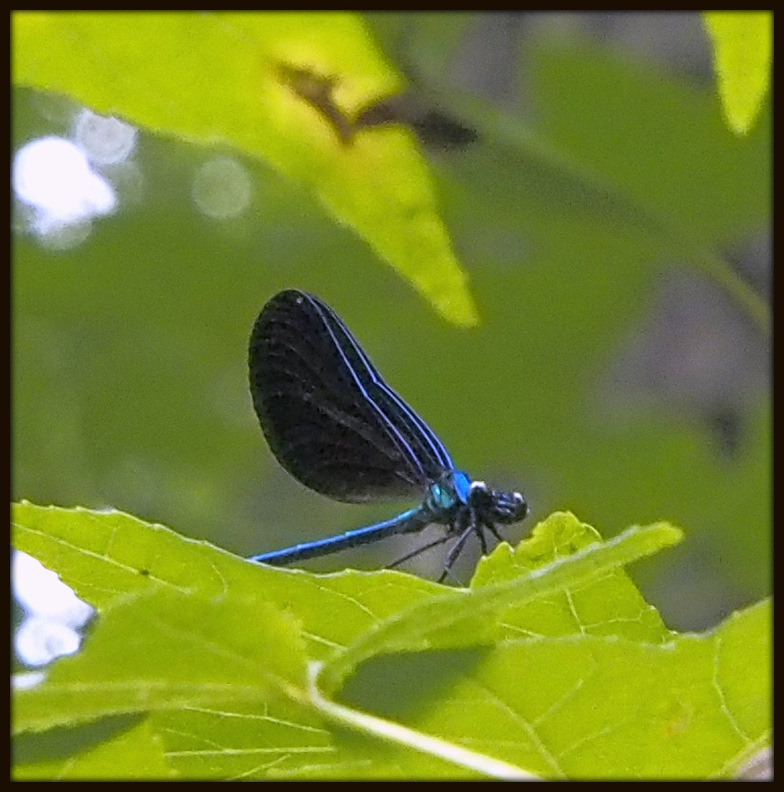
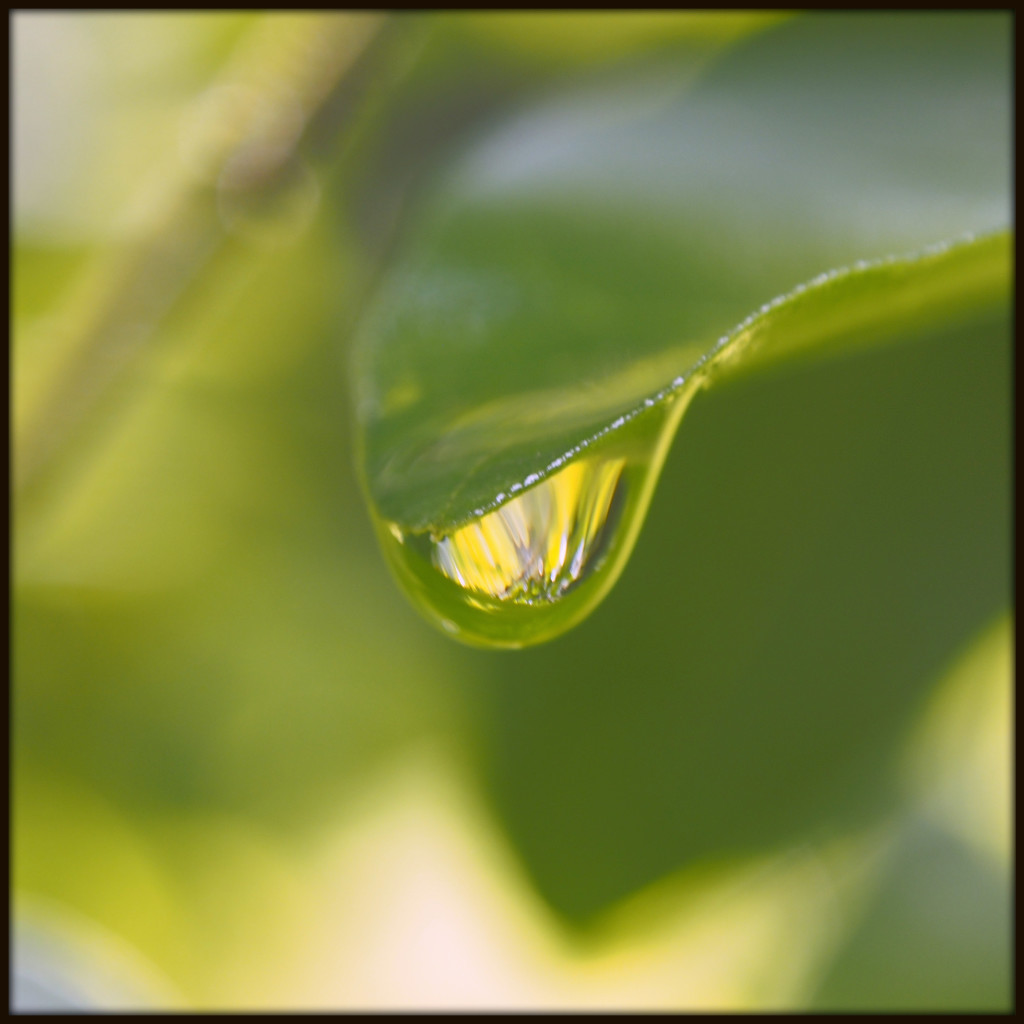
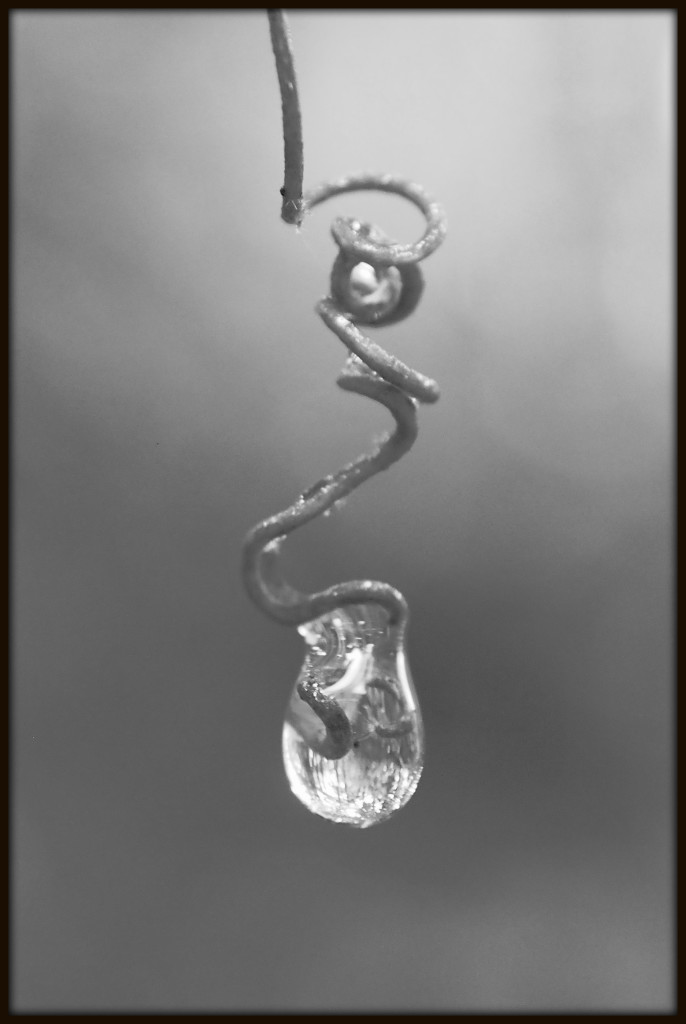
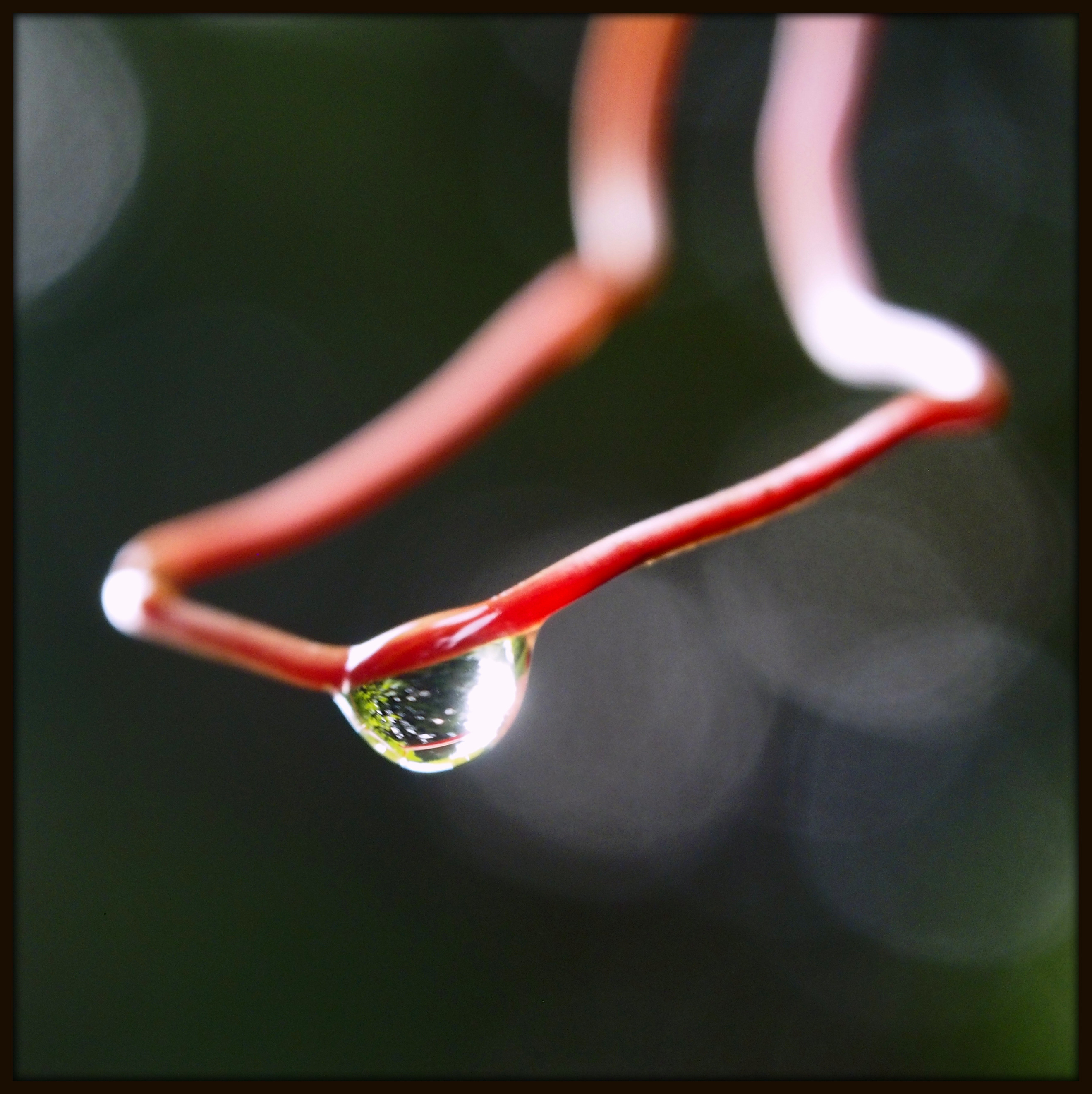
 Purple is a color that usually evokes late summer: the deep, dark purple of pokeweed berries (just now coming into bloom here in Georgia) and the succulent reddish-purple of the muscadines. But even now, on the cusp of the summer solstice, the observant naturalist can discover abundant shades of purple, from pinkish tones to violet ones, on a roadside walk. A brief stroll along the road edges here in Chattahoochee Hills, Georgia, revealed enough purple tones to write about: three flowers and two early fruits. The first flash of purple was toward the pinkish-blue shade, catching the eye amongst the various greens of roadside grasses and weeds. This five-petaled beauty (shown on the left) is a hairy ruellia (Ruellia caroliniensis), also known as Carolina wild petunia. A trumpet-shaped flower about one inch across, it looks like the kind of flower that would be found on a Hawaiian lei. Indeed, the genus Ruellia is largely a tropical one. Common throughout the eastern and central U.S., this perennial wildflower bears blooms that last for only one day.
Purple is a color that usually evokes late summer: the deep, dark purple of pokeweed berries (just now coming into bloom here in Georgia) and the succulent reddish-purple of the muscadines. But even now, on the cusp of the summer solstice, the observant naturalist can discover abundant shades of purple, from pinkish tones to violet ones, on a roadside walk. A brief stroll along the road edges here in Chattahoochee Hills, Georgia, revealed enough purple tones to write about: three flowers and two early fruits. The first flash of purple was toward the pinkish-blue shade, catching the eye amongst the various greens of roadside grasses and weeds. This five-petaled beauty (shown on the left) is a hairy ruellia (Ruellia caroliniensis), also known as Carolina wild petunia. A trumpet-shaped flower about one inch across, it looks like the kind of flower that would be found on a Hawaiian lei. Indeed, the genus Ruellia is largely a tropical one. Common throughout the eastern and central U.S., this perennial wildflower bears blooms that last for only one day. The gravel road passes through a wooded area with a canopy of loblolly pine and sweetgum, and an understory of oaks, black cherries, and persimmons. On a steep bank beside the road, in the shade, a stunning pinkish lavender flower is in bloom. Its irregular shape indicates that it is a member of the pea family (Fabaceae). Called butterfly pea (Clitoria mariana), it is a native perennial common to open areas throughout the eastern U.S. Another primarily tropical genus, Clitoria is abundant in Southeast Asia, where flowers are used for dyes and are also batter-dipped and deep-fried. Only two members of Clitoria are found in the U.S.; the second one (Clitoria fragrans) is restricted to sandlands in Florida. For those wondering, the rather racy genus name comes from the shape of the flower.
The gravel road passes through a wooded area with a canopy of loblolly pine and sweetgum, and an understory of oaks, black cherries, and persimmons. On a steep bank beside the road, in the shade, a stunning pinkish lavender flower is in bloom. Its irregular shape indicates that it is a member of the pea family (Fabaceae). Called butterfly pea (Clitoria mariana), it is a native perennial common to open areas throughout the eastern U.S. Another primarily tropical genus, Clitoria is abundant in Southeast Asia, where flowers are used for dyes and are also batter-dipped and deep-fried. Only two members of Clitoria are found in the U.S.; the second one (Clitoria fragrans) is restricted to sandlands in Florida. For those wondering, the rather racy genus name comes from the shape of the flower. Back out into the sunlight of a steamy late June morning, and along a grassy verge, a number of tiny violet and white flowers are in bloom in a short, cylindrical spike atop a stalk about one and a half feet tall. A Eurasian roadside wildflower, heal-all (Prunella vulgaris) is a member of the mint family (Lamiaceae). As its name suggests, heal-all has been used as a traditional folk remedy for many complains. The leaf tea, for instance, was used to treat mouth sores, sore throats, fevers, and diarrhea, while a poultice from this plant has been used for treating wounds, Chemcial analysis of this plant has revealed that it contains compounds with antibiotic, anti-tumor, and hypertensive properties. It contains large quantities of a powerful antioxidant called rosmarinic acid (named for rosemary, which also contains the compound).
Back out into the sunlight of a steamy late June morning, and along a grassy verge, a number of tiny violet and white flowers are in bloom in a short, cylindrical spike atop a stalk about one and a half feet tall. A Eurasian roadside wildflower, heal-all (Prunella vulgaris) is a member of the mint family (Lamiaceae). As its name suggests, heal-all has been used as a traditional folk remedy for many complains. The leaf tea, for instance, was used to treat mouth sores, sore throats, fevers, and diarrhea, while a poultice from this plant has been used for treating wounds, Chemcial analysis of this plant has revealed that it contains compounds with antibiotic, anti-tumor, and hypertensive properties. It contains large quantities of a powerful antioxidant called rosmarinic acid (named for rosemary, which also contains the compound). On the way home along the edge of a loblolly pine woods, a small dark purple fruit less than half an inch in diameter can be seen among the eliptical leaves of an understory tree. The fruit belongs to the black cherry (Prunus serotina), a much-prized deciduous tree common to the eastern and central U.S. Although the fruit is somewhat bitter, it is edible, and is often used for making wine and preserves. Birds feast on the fruits, while deer and other animals eat the leaves. Extracts of the inner bark are also used to make cough syrup. The wood of mature trees has a fine grain and rich orange-rose color, and is much valued by furniture-makers.
On the way home along the edge of a loblolly pine woods, a small dark purple fruit less than half an inch in diameter can be seen among the eliptical leaves of an understory tree. The fruit belongs to the black cherry (Prunus serotina), a much-prized deciduous tree common to the eastern and central U.S. Although the fruit is somewhat bitter, it is edible, and is often used for making wine and preserves. Birds feast on the fruits, while deer and other animals eat the leaves. Extracts of the inner bark are also used to make cough syrup. The wood of mature trees has a fine grain and rich orange-rose color, and is much valued by furniture-makers. Not far from the black cherry tree is a dense thicket of shrubs and vines edging a roadside stream. Amongst the tangle of grape vines and elderberry bushes grow a number of black raspberries (Rubus occidentalis) just coming into fruit. The deep purple to black orbs look inviting, but first must be inspected carefully for ants that are also dining on them. This thorny cane, common in disturbed areas in the Eastern U.S., appears quite similar to the southern blackberry (Rubus argutus). However, while the black raspberry fruits separate easily from their receptacles (as evident in the photograph above), blackberry fruits do not. After several minutes of carefully investigating this year’s black raspberry harvest, this author returned home, purple-fingered and purple-tongued.
Not far from the black cherry tree is a dense thicket of shrubs and vines edging a roadside stream. Amongst the tangle of grape vines and elderberry bushes grow a number of black raspberries (Rubus occidentalis) just coming into fruit. The deep purple to black orbs look inviting, but first must be inspected carefully for ants that are also dining on them. This thorny cane, common in disturbed areas in the Eastern U.S., appears quite similar to the southern blackberry (Rubus argutus). However, while the black raspberry fruits separate easily from their receptacles (as evident in the photograph above), blackberry fruits do not. After several minutes of carefully investigating this year’s black raspberry harvest, this author returned home, purple-fingered and purple-tongued.